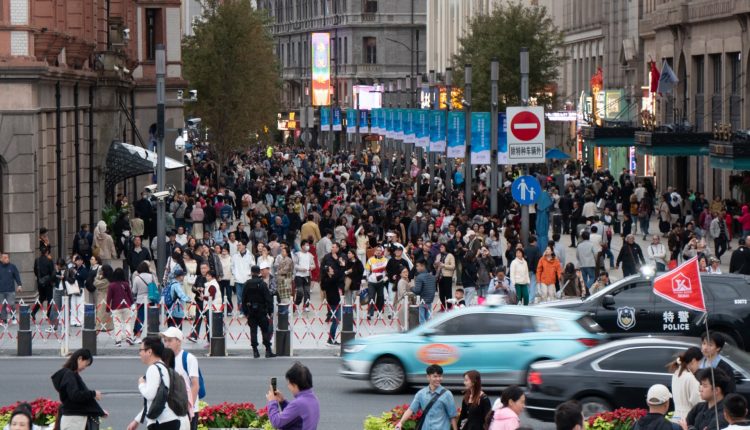Tourists visit the Nanjing Road Scenic Area in Shanghai, China, October 20, 2025.
Photo only | Photo only | Getty Images
Many people in China cheered the meeting between President Xi Jinping and US President Donald Trump on Thursday after months of escalating bilateral tensions.
Every time the two leaders meet, it helps ease tensions and create a “positive atmosphere,” Alex Hongcai Xu, chairman of Beijing Honglve Consulting, said in Mandarin, translated by CNBC. “This atmosphere is conducive to negotiations.”
“Reducing tariffs to below 10% would benefit mutual capital flows and cooperation,” Xu said. He noted that China could likely buy more U.S. and U.S.-made soybeans Boeing Airplanes.
Trump said Thursday after the meeting that the U.S. would cut a 20% fentanyl-related tariff against China in half, bringing the total tariff on Chinese goods to 47%. That was a significant about-face from his earlier threat to impose additional 100 percent tariffs on China starting Saturday.
But Trump offered few details on whether the U.S. would encourage more Chinese investment, saying only that “they have investments.” [in the U.S.] and they will invest.
Xu said he hoped Washington would allow more Chinese companies to invest locally, which he said would create U.S. jobs and boost domestic manufacturing while reducing Chinese exports.
Chinese companies, for their part, are looking for opportunities abroad as the domestic economy weakens.
“If U.S. policy can be more certain or promise lower tariffs, then at least Chinese investment in other countries can increase,” said Luke Li, who works in energy-related manufacturing and trading in Beijing, according to a CNBC translation of his remarks in Chinese.
“As long as they meet, there will be progress,” Li said, noting that “our main focus is on the US tariffs on China, whether they will be adjusted.”
When Xi and Trump met in South Korea on Thursday morning local time, “Busan Sino-American Leaders Summit” was the No. 1 hashtag on Weibo, a social media platform similar to X.
“Interest Rate Cut” was the second most popular hashtag, while the trending topic at number four was also focused on the Trump-Xi meeting.
However, most of the posts came from Chinese news outlets. According to a CNBC translation, user comments were short, such as “Long live China-US friendship” and “Mutual success between China and the US.” It was unclear whether each comment represented a separate user.
On the trendy Xiaohongshu, or RedNote, app, one of the few posts about the summit was from economist and frequent social media commentator Song Qinghui, who wrote in Chinese: “Look forward to the early start of the China-US honeymoon.”
Weekly analysis and insights from Asia’s largest economy in your inbox
Subscribe now
Beijing restricts access to X and many other U.S. social media platforms while maintaining tight control over domestic news outlets.
While Chinese state media initially focused on Beijing’s recent space exploration plans and downplayed the Trump-Xi meeting, opting instead to highlight Xi’s participation in the Asia-Pacific Economic Cooperation business leaders meeting, official coverage increased after the talks began. The Chinese Foreign Ministry only confirmed the meeting between Trump and Xi on Wednesday afternoon.
State broadcaster CCTV, which spent much of Thursday morning covering China’s latest space mission Shenzhou-21, only began broadcasting regular updates about the meeting after the two leaders met.
China’s official reading of Xi’s opening speech said Beijing was ready to work with Washington and quoted Xi as saying: “China’s development and revitalization goes hand in hand with President Trump’s vision of ‘Making America Great Again’.”
“Trump [has been] overly confident. “He’s not listening,” Xu said, referring to the U.S. president’s focus on raising tariffs.
“If the U.S. and China are in chaos, can the U.S. become great again?” he said. “Absolutely not.”


Comments are closed, but trackbacks and pingbacks are open.